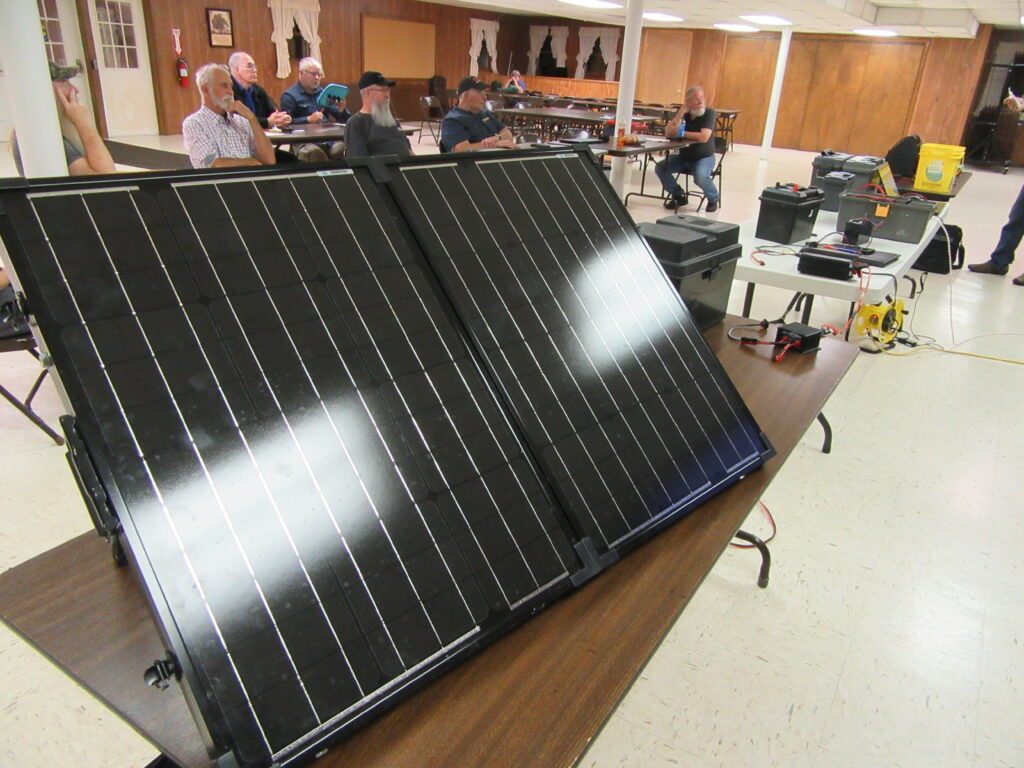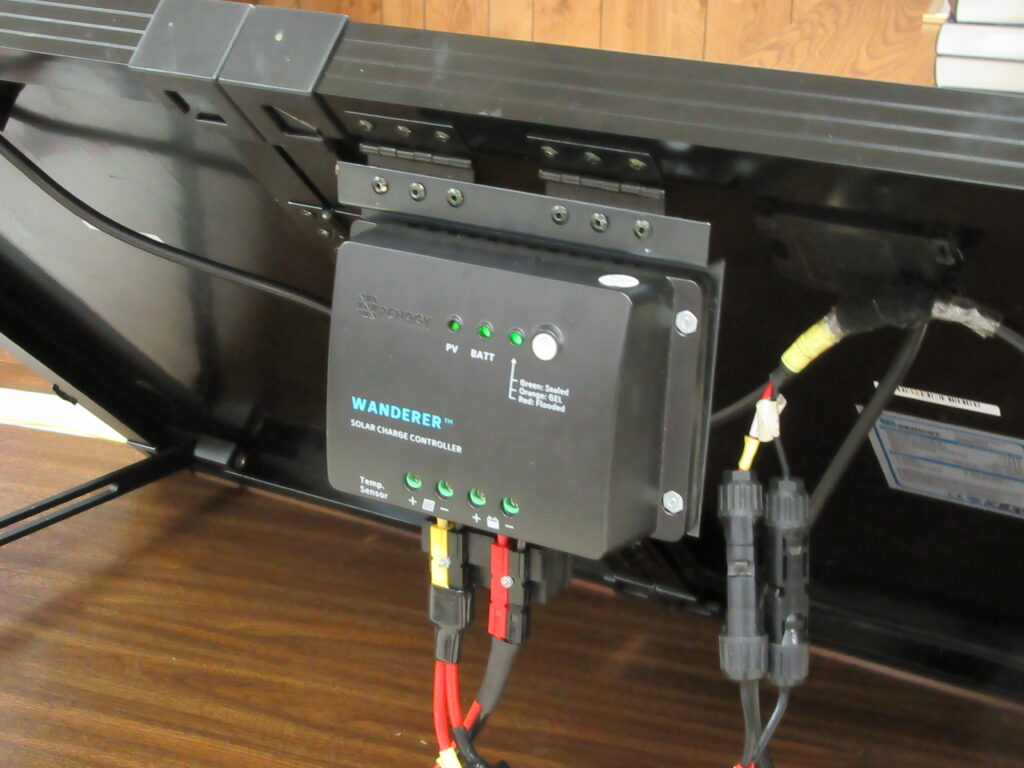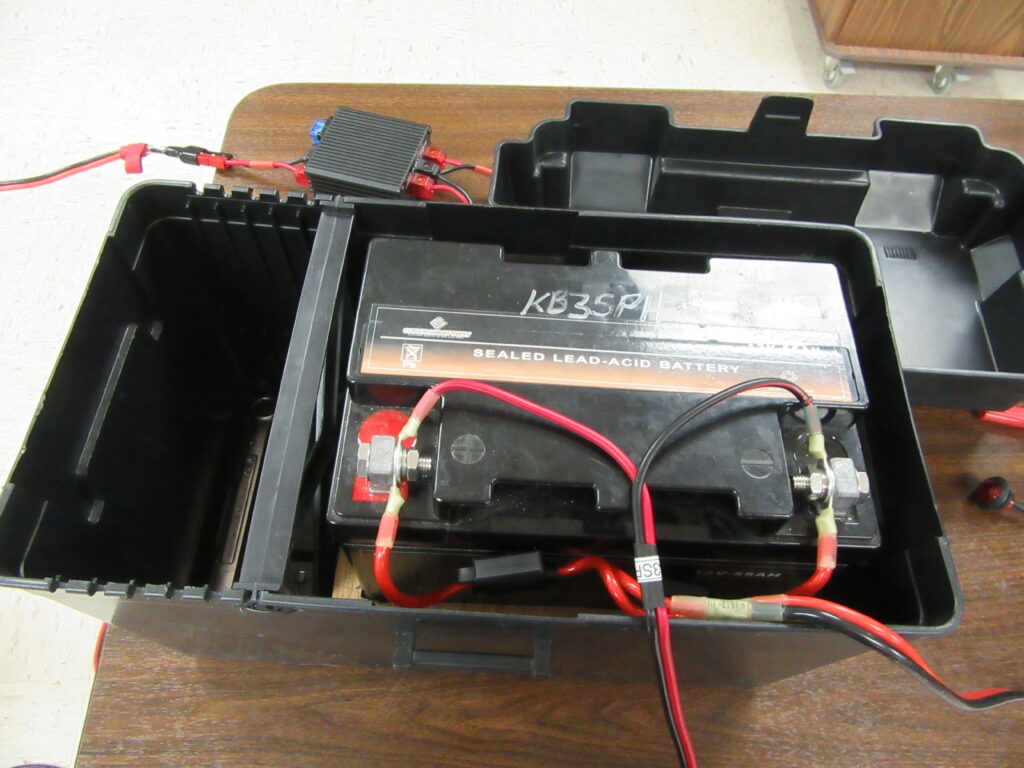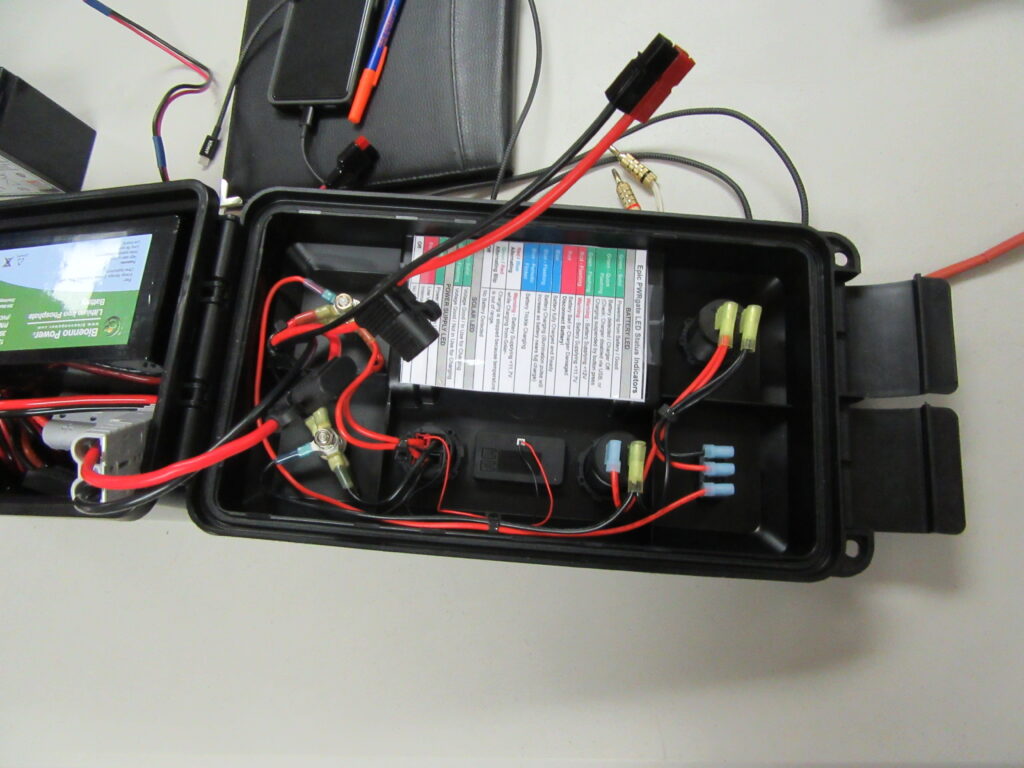Jeff, KB3SPH, gave a presentation on building your own Battery Box.
Items he covered were:
Considerations (why would I need one and where would i use it?)
A Demo of a battery box
Considerations
Where woud I use it?
- installed in shack as a backup power source, maybe as a UPS
- part of a portable go-kit
- multi use — mobile, portable, standby
battery size
- amp hour rating
- physical size/weight
battery type
- flooded lead acide
- lithium ion
- Lithium iron phosphate (LiFePO4)
Box size/type
- big enought for battery or other stuff as well
- weather seal on box
- plastic or metal
Charging method
how are you going to charge it? be able to remove battery, do you include the charger in the box or wire it to include a charging port.
Options
Binding posts
powerpole outlet
meters
12v outlets
usb charing
power supply nput
power distribution
solar controller integration
He then started his demo. His LiFePO battery is a 35am Bioeno battery (about 8 pounds) compared to a 40ah acid battery (40 pounds).
The Bioeno comes with power poles connections already installed. He then showed his PowerWerk battery box that he had purchased, and which was already built, but then he used that as a base line as he wanted something a bit bigger to also incorporate additional items, such as a solar charger.
He makes use of an ‘Epic PowerGate’ rigrunner that accepts solar, battery and power supply inputs with one output. If there is no draw of current, then the battery will be charged. As current is needed, it will first look for a power supply input. If none are available, then it will make use of the battery.
His solar panel is made by Renogy. He built a 10ft powerpole extension cord, so the battery does not have live near the solar panel and then showed how he plans on integrating that into the power box. This resulted in him having to build several adapter cables with powerpoles to allow everything to tie together and still power the original meters that were on the PowerWerk battery box.
He noted that with the LiFiPO, you can get to about 90% depletion before the 13.6v output just dies, whereas with lead acid you can only get to about 50% and then there is the potential for damage the battery.

A sample battery box 

Relogy solar panel 


The inside of the box with room to spare 
The top view with labels 
